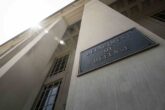May 30, 2022
Boots on the Ground, Eyes in the Sky
Days after Russia began its invasion of Ukraine, Ukrainian President Volodymyr Zelensky delivered an emotional address to the European Parliament, pleading for support. That same day, Ukraine’s vice prime minister and minister of digital transformation, Mykhailo Fedorov, took to Twitter to announce a more targeted—but no less urgent—plea to the executives and corporate board members of commercial satellite companies. Specifically, Fedorov appealed to several leading private satellite firms to provide high-resolution imagery “in real time” to the Ukrainian armed forces to assist them in fending off Russian aggression.
As we wrote in 2021, commercial satellite imagery is dramatically changing the information landscape, particularly when it comes to national security. Gone are the days when only governments could collect advanced intelligence about their rivals and when militaries could keep information about battlefield developments concealed from public view. Now, members of the public can use commercial satellite imagery to reveal activities some governments would rather keep hidden. They have documented North Korea’s expanding nuclear arsenal and exposed human rights abuses such as China’s detention of the Uyghur population in internment camps. In Ukraine, a multitude of actors, including private satellite firms, think tanks, journalists, and amateur sleuths, have used commercial satellite imageryalongside other forms of open-source intelligence to reveal and verify information about military maneuvers, battlefield losses, and Russia’s targeting of civilians.
Satellite imagery is dramatically changing the information landscape, particularly when it comes to national security.
By openly providing information that once would have remained largely secret, commercial satellite imagery has helped galvanize public support for Ukraine, informed Ukrainian military planning and operations, and countered Russian misinformation. But these advantages do not come without risks: the United States’ friends and foes alike will seek to exploit the growing amount of information available to nongovernment users. The United States, its allies, and its partners might find their own sensitive activities subject to surveillance. Pro-Russian actors could likewise exploit open-source satellite information to undercut the Ukrainian defense. Commercial satellite companies could even eventually find themselves in Moscow’s crosshairs. As private satellites go to war, they are transforming the character of modern conflict. Although states still rely overwhelmingly on covert intelligence-gathering methods, Western governments should be sure to account for the opportunities and risks this evolving technology poses as they craft foreign and national security policy.
Read the full article from Foreign Affairs.
More from CNAS
-
Defense / Transatlantic Security
When Defense Becomes Destruction: Austria-Hungary’s Mistake and Ukraine’s RiskThis article was originally posted on War on the Rocks. The southeastern Polish city of Przemyśl, with its elegant 19th century Habsburg-era train station, remains one of the ...
By Franz-Stefan Gady
-
Defense / Transatlantic Security
Ukraine’s Catch-22 MomentThis article was originally published in the Financial Times. In Joseph Heller’s wartime classic, Catch-22, the protagonist Yossarian seeks out the US army surgeon Doc Daneeka...
By Franz-Stefan Gady
-
CNAS Insights | Budgetary Own Goals Undermine “Speed and Volume”
On November 7, Secretary of Defense Pete Hegseth laid out a plan to overhaul the Department of Defense’s (DOD’s) acquisition system. Placing an emphasis on delivering new capa...
By Philip Sheers, Carlton Haelig & Stacie Pettyjohn
-
Drones: Who Is Making the New Weapons of War?
From Ukraine and Russia to Gaza and Sudan, drones have become a key weapon of war. Which companies are making them, and profiting from this rapidly expanding but controversial...
By Stacie Pettyjohn




